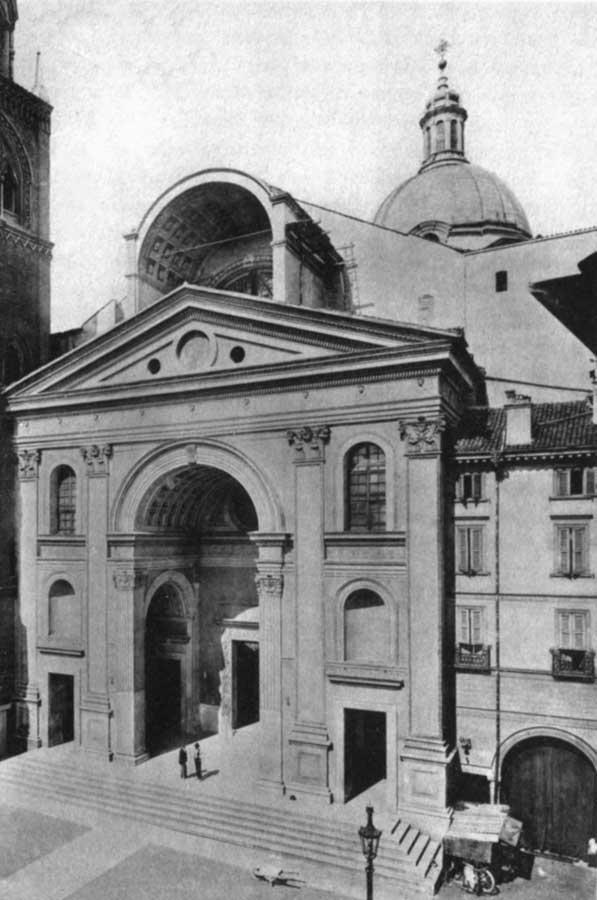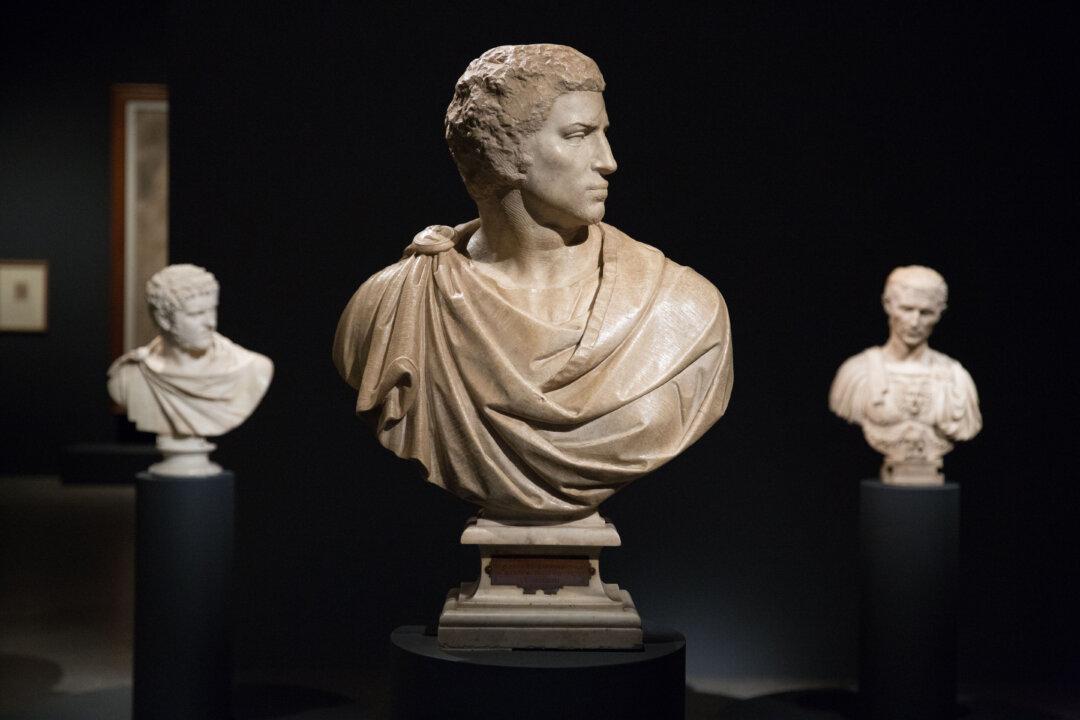Very great is the advantage bestowed by learning, without exception, on all those craftsmen who take delight in it, but particularly on sculptors, painters, and architects, for it opens up the way to invention in all the works that are made; not to mention that a man cannot have a perfect judgment, be his natural gifts what they may, if he is deprived of the complemental advantage of being assisted by learning. For who does not know that it is necessary, in choosing sites for buildings, to show enlightenment in the avoidance of danger from pestiferous winds, insalubrious air, and the smells and vapours of impure and unwholesome waters? Who is ignorant that a man must be able, in whatever work he is seeking to carry out, to reject or adopt everything for himself after mature consideration, without having to depend on help from another man’s theory? For theory, when separated from practice, is generally of very little use; but when the two chance to come together, there is nothing that is more helpful to our life, both because art becomes much richer and more perfect by the aid of science, and because the counsels and the writings of learned craftsmen have in themselves greater efficacy and greater credit than the words or works of those who know nothing but mere practice, whether they do it well or ill. And that all this is true is seen manifestly in Leon Batista Alberti, who, having studied the Latin tongue, and having given attention to architecture, to perspective, and to painting, left behind him books written in such a manner, that, since not one of our modern craftsmen has been able to expound these matters in writing, although very many of them in his own country have excelled him in working, it is generally believed—such is the influence of his writings over the pens and speech of the learned—that he was superior to all those who were actually superior to him in work. Wherefore, with regard to name and fame, it is seen from experience that writings have greater power and longer life than anything else; for books go everywhere with ease, and everywhere they command belief, if only they be truthful and not full of lies. It is no marvel, then, if the famous Leon Batista is known more for his writings than for the work of his hands.
This man, born in Florence of the most noble family of the Alberti, of which we have spoken in another place, devoted himself not only to studying geography and the proportions of antiquities, but also to writing, to which he was much inclined, much more than to working. He was excellent in arithmetic and geometry, and he wrote ten books on architecture in the Latin tongue, which were published by him in 1481, and may now be read in a translation in the Florentine tongue made by the Reverend Maestro Cosimo Bartoli, Provost of S. Giovanni in Florence. He wrote three books on painting, now translated into the Tuscan tongue by Messer Lodovico Domenichi; he composed a treatise on traction and on the rules for measuring heights, as well as the books on the “Vita Civile,” and some erotic works in prose and verse; and he was the first who tried to reduce Italian verse to the measure of the Latin, as is seen in the following epistle by his pen:
Questa per estrema miserabile pistola mando A te, che spregi miseramente noi.
Arriving at Rome in the time of Nicholas V, who had turned the whole of Rome upside down with his manner of building, Leon Batista, through the agency of Biondo da Forlì, who was much his friend, became intimate with that Pope, who had previously carried out all his building after the advice of Bernardo Rossellino, a sculptor and architect of Florence, as will be told in the Life of his brother Antonio. This man, having put his hand to restoring the Pope’s Palace and to certain works in S. Maria Maggiore, thenceforward, according to the will of the Pope, ever sought the advice of Leon Batista. Wherefore, using one of them as adviser and the other as executor, the Pope carried out many useful and praiseworthy works, such as the restoring of the conduit of the Acqua Vergine, which was in ruins; and there was made the fountain on the Piazza de' Trevi, with those marble ornaments that are seen there, on which are the arms of that Pontiff and of the Roman people.
Afterwards, having gone to Signor Sigismondo Malatesti of Rimini, he made for him the model of the Church of S. Francesco, and in particular that of the façade, which was made of marble; and likewise the side facing towards the south, which was built with very great arches and with tombs for the illustrious men of that city. In short, he brought that building to such a form that in point of solidity it is one of the most famous temples in Italy. Within it are six most beautiful chapels, one of which, dedicated to S. Jerome, is very ornate; and in it are preserved many relics brought from Jerusalem. In the same chapel are the tombs of the said Signor Sigismondo and of his wife, constructed very richly of marble in the year 1450; on one there is the portrait of Sigismondo himself, and in another part of the work there is that of Leon Batista.
After this, in the year 1457, when the very useful method of printing books was discovered by Johann Gutenberg the German, Leon Batista, working on similar lines, discovered a way of tracing natural perspectives and of effecting the diminution of figures by means of an instrument, and likewise the method of enlarging small things and reproducing them on a greater scale; all ingenious inventions, useful to art and very beautiful.
In Leon Batista’s time Giovanni di Paolo Rucellai wished to build the principal façade of S. Maria Novella entirely of marble at his own expense, and he spoke of this to Leon Batista, who was very much his friend; and having received from him not only counsel, but the actual model, Giovanni resolved to have the work executed at all costs, in order to leave it behind him as a memorial of himself. A beginning having been made, therefore, it was finished in the year 1477, to the great satisfaction of all the city, which was pleased with the whole work, but particularly with the door, from which it is seen that Leon Batista took more than ordinary pains. For Cosimo Rucellai, likewise, he made the design for the palace which that man built in the street which is called La Vigna, and that for the loggia which is opposite to it. In the latter, having turned his arches over columns close together, both in the front and at the ends, since he wished to adhere to this plan and not to make one single arch, he had a certain space left over on each side; wherefore he was forced to make certain projections at the inner corners. And then, when he wished to turn the arch of the inner vaulting, having seen that he could not give it the shape of a half-circle, which would have been flat and awkward, he resolved to turn certain small arches at the corners from one projection to another; and this lack of judgment in design gives us to know clearly that practice is necessary as well as science, for the judgment can never become perfect unless science attains to experience by actual work.
It is said that the same man made the design for the house and garden of these Rucellai in the Via della Scala. This house is built with much judgment and very commodious, for, besides many other conveniences, it has two loggie, one facing south and the other west, both very beautiful, and made without arches on the columns, which is the true and proper method that the ancients used, for the reason that the architraves which are placed on the capitals of the columns lie level, whereas a four-sided thing like a curving arch cannot rest on a round column without the corners jutting out over space. The good method, therefore, demands that architraves should rest on columns, and that, when arches are to be turned, pilasters and not columns should be made.
For the same Rucellai Leon Batista made a chapel in the same manner in S. Pancrazio, which rests on great architraves placed on two columns and two pilasters, piercing the wall of the church below; which is a difficult thing, but safe; wherefore this work is one of the best that this architect ever made. In the middle of this chapel is a tomb of marble, wrought very well in the form of a rather long oval, and similar, as may be read on it, to the Sepulchre of Jesus Christ in Jerusalem.

FAÇADE OF S. ANDREA (After Leon Batista Alberti. Mantua) Alinari
About the same time Lodovico Gonzaga, Marquis of Mantua, wished to build the tribune and the principal chapel in the Nunziata, the Church of the Servi in Florence, after the design and model of Leon Batista; and pulling down a square chapel, old, not very large, and painted in the ancient manner, which stood at the head of the church, he built the said tribune in the bizarre and difficult form of a round temple surrounded by nine chapels, all curving in a round arch, and each within in the shape of a niche. Now, since the arches of the said chapels rest on the pilasters in front, the result is that the stone dressings of the arches, inclining towards the wall, tend to draw ever backwards in order to meet the said wall, which turns in the opposite direction according to the shape of the tribune; wherefore, when the said arches of the chapels are looked at from the side, it appears that they are falling backwards, and that they are clumsy, as indeed they are, although the proportions are correct, and the difficulties of the method must be remembered. Truly it would have been better if Leon Batista had avoided this method, for, although there is some credit for the difficulty of its execution, it is clumsy both in great things and in small, and it cannot have a good result. And that this is true of great things is proved by the great arch in front, which forms the entrance to the said tribune; for, although it is very beautiful on the outer side, on the inner side, where it has to follow the curve of the chapel, which is round, it appears to be falling backwards and to be extremely clumsy. This Leon Batista would perhaps not have done, if, in addition to science and theory, he had possessed practical experience in working; for another man would have avoided this difficulty, and would have rather aimed at grace and greater beauty for the edifice. The whole work is otherwise in itself very beautiful, bizarre, and difficult; and nothing save great courage could have enabled Leon Batista to vault that tribune in those times in the manner that he did. Being then summoned by the same Marquis Lodovico to Mantua, Leon Batista made for him the models of the Church of S. Andrea and of some other works; and on the road leading from Mantua to Padua there may be seen certain temples built after his manner. Many of the designs and models of Leon Batista were carried into execution by Salvestro Fancelli, a passing good architect and sculptor of Florence, who, according to the desire of the said Leon Batista, executed with judgment and extraordinary diligence all the works that he undertook in Florence. For those in Mantua he employed one Luca, a Florentine, who, living ever afterwards in that city and dying there, left his name—so Filarete tells us—to the family of the Luchi, which is still there to-day. It was no small good-fortune for him to have friends who understood him and were able and willing to serve him, because architects cannot be always standing over their work, and it is of the greatest use to them to have a faithful and loving assistant; and if any man ever knew it, I know it very well by long experience.
In painting Leon Batista did not do great or very beautiful works, for the few by his hand that are to be seen do not show much perfection; nor is this to be wondered at, seeing that he devoted himself more to his studies than to draughtsmanship. Yet he could express his conceptions well enough in drawing, as may be seen from some sketches by his hand that are in our book, in which there are drawn the Bridge of S. Angelo and the covering that was made for it with his design in the form of a loggia, for protection from the sun in summer and from the rain and wind in winter. This work he was commissioned to execute by Pope Nicholas V, who had intended to carry out many similar works throughout the whole of Rome; but death intervened to hinder him. There is a work of Leon Batista’s in a little Chapel of Our Lady on the abutment of the Ponte alla Carraja in Florence—namely, an altar-predella, containing three little scenes with some perspectives, which he was much more able to describe with the pen than to paint with the brush. In the house of the Palla Rucellai family, also in Florence, there is a portrait of himself made with a mirror; and a panel with rather large figures in chiaroscuro. He also made a picture of Venice in perspective, with S. Marco, but the figures therein were executed by other masters; and this is one of the best examples of his painting that there are to be seen.
Leon Batista was a person of most honest and laudable ways, the friend of men of talent, and very open and courteous to all; and he lived honourably and like a gentleman—which he was—through the whole course of his life. Finally, having reached a mature enough age, he passed content and tranquil to a better life, leaving a most honourable name behind him.






